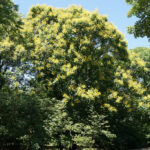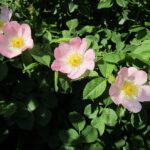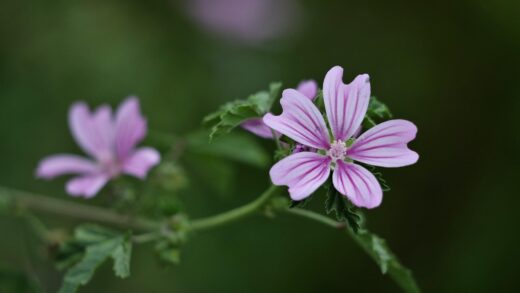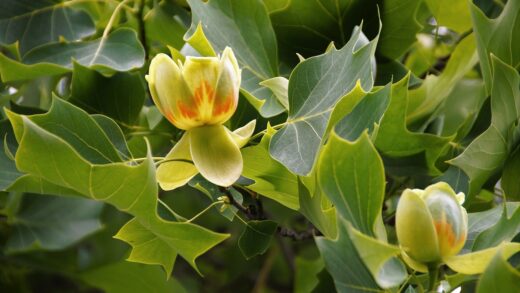Successfully cultivating the gardenia, a plant renowned for its intoxicatingly fragrant, creamy-white blossoms and glossy, dark green leaves, is a rewarding endeavor for any dedicated gardener. This plant, however, is not without its challenges, as it demands specific conditions to truly thrive and produce its signature blooms. Understanding its unique requirements for light, water, soil, and temperature is the foundational step toward enjoying its beauty for years to come. Achieving the right balance is less about a strict set of rules and more about developing an intuitive understanding of the plant’s needs and responding to its subtle cues. This guide will provide a comprehensive overview of the essential care practices required to maintain a healthy and floriferous gardenia, turning a potentially frustrating experience into a fulfilling horticultural journey.
The gardenia is often considered a symbol of purity, love, and refinement, making its successful cultivation all the more desirable for enthusiasts. Its journey from a simple green shrub to a magnificent flowering specimen is a testament to the gardener’s skill and attention to detail. These plants originate from subtropical regions, which gives us vital clues about the environment they prefer: high humidity, warm days, and cool nights. Replicating these conditions in a home or garden setting is the primary goal of any gardenia care regimen. Failure to do so often results in common issues like yellowing leaves and bud drop, which can be disheartening for even experienced plant lovers.
Caring for a gardenia is an active, ongoing process rather than a passive one, requiring regular observation and adjustments. The plant communicates its needs clearly through the condition of its foliage and buds, and learning to interpret these signals is paramount. For instance, the vibrancy of the leaves can indicate whether it is receiving the correct nutrients, while the development of flower buds can signal its overall contentment with its environment. Therefore, consistent interaction and monitoring are far more effective than a rigid, one-size-fits-all approach to its care. This proactive mindset helps prevent problems before they become severe.
Ultimately, the key to a thriving gardenia lies in consistency and precision. These plants are sensitive to sudden changes in their environment, so creating a stable and suitable habitat is crucial for their long-term health. Whether grown indoors in a container or outdoors in a sheltered garden spot, the principles of care remain the same. From the acidity of the soil to the quality of the water, every detail contributes to the plant’s overall well-being. By mastering these elements, you can ensure your gardenia not only survives but flourishes, rewarding you with its exquisite and aromatic display.
The importance of the right location
Choosing the perfect spot for your gardenia is arguably the most critical decision you will make in its entire care journey. This plant thrives in bright, indirect sunlight, a condition that provides the energy for photosynthesis without scorching its delicate leaves. An ideal location might be near an east-facing window where it can receive gentle morning sun, or in a spot that gets filtered sunlight for at least four to six hours daily. Direct, harsh afternoon sun, especially in warmer climates, can lead to leaf burn, stress, and a general decline in the plant’s health. Careful consideration of light exposure is the first step toward a happy plant.
More articles on this topic
Beyond light, the chosen location must also offer protection from extreme environmental factors. Gardenias are sensitive to drafts, whether from an open window, a heating vent, or an air conditioner. Sudden fluctuations in temperature can shock the plant, leading to the dreaded bud drop, where seemingly healthy flower buds fall off before they have a chance to open. The ideal temperature range for a gardenia is typically between 18-24°C (65-75°F) during the day and slightly cooler at night, around 15-18°C (60-65°F). This cooler nighttime temperature is particularly important for stimulating bud formation.
Humidity is another crucial environmental factor that is directly influenced by the plant’s location. Gardenias are native to humid, subtropical climates and require a significant amount of moisture in the air to keep their leaves lush and prevent them from drying out. A location in a naturally humid room, such as a bathroom or kitchen, can be beneficial. Alternatively, you can increase humidity by placing the pot on a tray filled with pebbles and water, ensuring the bottom of the pot is not submerged. Grouping it with other plants can also help create a more humid microclimate.
When selecting a location for outdoor planting in suitable zones, the principles remain similar but with additional considerations. The spot should be sheltered from strong winds, which can desiccate the leaves and damage the branches. It should also have some protection from the most intense midday sun, perhaps under the canopy of a larger tree that provides dappled light. The proximity to other plants must also be considered, ensuring there is adequate air circulation to help prevent the development of fungal diseases. A well-chosen location minimizes future problems and sets the stage for success.
Soil and potting fundamentals
The foundation of a healthy gardenia is, quite literally, the soil it is planted in. These plants are ericaceous, meaning they require acidic soil with a pH level between 5.0 and 6.5 to thrive. In soil that is too alkaline, the gardenia cannot properly absorb essential nutrients, particularly iron, which leads to a condition called chlorosis. This is easily identified by the yellowing of new leaves while the veins remain green. To ensure the correct acidity, it is always best to use a high-quality potting mix specifically formulated for acid-loving plants like azaleas, rhododendrons, and, of course, gardenias.
More articles on this topic
When potting or repotting a gardenia, selecting the right container is just as important as the soil mix. The pot must have excellent drainage to prevent water from logging at the roots, which is a common cause of root rot. Choose a container with multiple drainage holes at the bottom. The size of the pot is also a key factor; while it might be tempting to give the plant a large pot to grow into, this can be counterproductive. A pot that is too large holds excess moisture that the root system cannot absorb quickly, increasing the risk of root diseases. It is better to repot the gardenia every one to two years into a container that is only slightly larger than the previous one.
The physical structure of the soil is another vital aspect to consider for optimal root health. An ideal gardenia soil mix should not only be acidic but also well-draining and rich in organic matter. A good mixture often contains components like peat moss or coco coir to retain some moisture and provide acidity, perlite or sand to improve drainage and aeration, and compost or well-rotted pine bark to add nutrients. This combination ensures that the roots have access to the water and nutrients they need without becoming suffocated or waterlogged.
Over time, the soil in a pot can become compacted or depleted of its essential nutrients and acidity. This is why periodic repotting is a necessary part of long-term gardenia care. The best time to repot is in the spring, after the plant has finished its main blooming cycle. When repotting, gently remove the plant from its old container, inspect the roots for any signs of disease or circling, and carefully place it in the new pot with fresh, acidic soil. This process refreshes the growing medium and provides the plant with a new lease on life.
Watering and feeding regimen
Proper watering is a delicate balancing act when it comes to gardenias. The goal is to keep the soil consistently moist but never soggy or waterlogged. A good rule of thumb is to check the top inch or two of the soil; if it feels dry to the touch, it is time to water. Water the plant thoroughly until you see water flowing out of the drainage holes at the bottom of the pot. This ensures that the entire root ball is hydrated. After watering, be sure to empty any excess water from the saucer to prevent the plant from sitting in standing water.
The quality of the water used can also have a significant impact on the health of your gardenia. These plants are sensitive to the high mineral content, particularly calcium, found in hard tap water. Over time, watering with hard water can raise the soil’s pH, making it more alkaline and hindering the plant’s ability to absorb iron and other vital nutrients. Whenever possible, it is best to use rainwater, distilled water, or filtered water. If you must use tap water, allowing it to sit out for 24 hours can help some of the chlorine evaporate, but it will not reduce the mineral content.
In addition to consistent watering, a regular feeding schedule is essential for promoting lush foliage and abundant blooms. Gardenias are heavy feeders, especially during their active growing season in the spring and summer. Use a fertilizer specifically formulated for acid-loving plants, as it will contain the right balance of nutrients and help maintain the soil’s low pH. A balanced liquid fertilizer applied every two to four weeks during the growing season is a common and effective approach. Always follow the instructions on the fertilizer packaging to avoid over-fertilizing, which can burn the roots.
As the seasons change, so should your watering and feeding routine. During the autumn and winter months, the gardenia’s growth slows down significantly, and it enters a semi-dormant period. In this phase, the plant requires less water and should not be fertilized at all. Reduce the frequency of watering, allowing the soil to dry out a bit more between sessions. Resuming the regular feeding schedule should only happen in the spring when you begin to see signs of new growth. This adjustment period allows the plant to rest and conserve energy for the next blooming season.
Pruning and ongoing maintenance
Pruning is a vital aspect of gardenia care that helps maintain the plant’s shape, encourages bushier growth, and promotes more prolific flowering. The best time to prune a gardenia is immediately after it has finished blooming. Pruning too late in the season can result in cutting off the new growth where the following year’s flower buds will form. The primary goals of pruning are to remove any dead, damaged, or crossing branches, and to lightly shape the plant to maintain a desirable size and form. Use clean, sharp pruning shears to make precise cuts.
Beyond the main annual pruning, ongoing maintenance throughout the year is crucial for keeping your gardenia in peak condition. This includes the practice of deadheading, which is the removal of spent flowers. As soon as a bloom starts to fade and turn brown, pinch it or snip it off at its base. This not only keeps the plant looking tidy but also prevents it from expending energy on producing seeds. By redirecting this energy, the plant is encouraged to produce more flowers, often extending the blooming period.
Regularly inspecting your gardenia is a key part of proactive maintenance. Take the time to look closely at the leaves, both on the top and the underside, as well as the stems and the soil surface. This allows you to catch any potential problems, such as pests or the early signs of disease, before they become major issues. Look for things like sticky residue, fine webbing, small insects, or spots on the leaves. Early detection makes treatment far more effective and less stressful for the plant.
Finally, ensuring good air circulation around the plant is a simple yet effective maintenance task. If the plant’s foliage is too dense, it can create a humid, stagnant environment that is a breeding ground for fungal diseases like powdery mildew. Selective thinning of some of the inner branches during pruning can open up the plant and improve airflow. For indoor plants, avoid crowding them too closely together. This simple step can significantly reduce the risk of many common gardenia ailments and contributes to its overall long-term vitality.
Troubleshooting common problems
One of the most frequent and frustrating issues gardenia owners face is the yellowing of leaves, a condition known as chlorosis. As previously mentioned, this is often a symptom of an iron deficiency caused by high soil pH. If you notice new leaves turning yellow while the veins remain green, it’s a clear signal that the soil is too alkaline. To remedy this, you can apply an iron chelate supplement to the soil and ensure you are using a fertilizer designed for acid-loving plants. Additionally, watering with acidic water, such as rainwater or water with a small amount of vinegar added, can help lower the soil pH over time.
Another common complaint is bud drop, where the plant sets beautiful flower buds only for them to fall off before opening. This is almost always a sign of environmental stress and the plant’s sensitivity to change. The cause could be a number of factors, including inconsistent watering (both over and underwatering), sudden temperature fluctuations, low humidity, or insufficient light. To troubleshoot this problem, review your care routine and the plant’s location. Ensure the soil is kept consistently moist, protect the plant from drafts, and increase ambient humidity to create a more stable and nurturing environment.
Pest infestations are another hurdle that may arise in your gardenia care journey. Common culprits include aphids, mealybugs, spider mites, and whiteflies, which feed on the plant’s sap and can cause stunted growth and distorted leaves. A tell-tale sign of these pests is often a sticky substance on the leaves called honeydew, which can in turn lead to the growth of sooty mold. For minor infestations, you can often treat the plant by wiping the leaves with a cotton swab dipped in rubbing alcohol or by spraying it with insecticidal soap. For more severe problems, horticultural oils may be necessary.
Lastly, fungal diseases can occasionally affect gardenias, particularly in conditions of high humidity and poor air circulation. Powdery mildew, which appears as a white, dusty coating on the leaves, and sooty mold, a black fungus that grows on honeydew, are two of the most common. The best defense against these diseases is prevention. Ensure your plant has good airflow around it and avoid getting the leaves wet when watering. If a fungal issue does appear, remove the affected leaves and treat the plant with an appropriate fungicide, following the product’s instructions carefully.


















